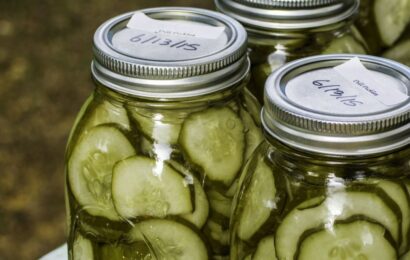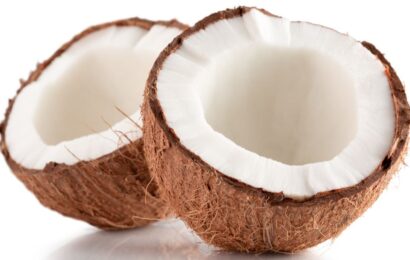“What can I eat?” “What shouldn’t I eat?” These are top questions that dietitians are asked, and rightly so. A lot of people with diabetes struggle to figure this out. Fortunately, having diabetes doesn’t mean you have to give up everything you love to eat, but it does involve learning how foods impact your blood sugars.
Nutrition at a high level
We all need a balance of nutrients to be healthy and lower the risk of health problems. If you cut out entire food groups, you run the risk of possibly developing nutrient deficiencies. For example, a vitamin B12 deficiency is a risk for someone following a vegan diet. Not eating certain foods may also increase the risk of a variety health conditions or diseases. As an example, people who don’t eat enough fruits, vegetables, and whole grains may have a higher risk of getting heart disease or some types of cancer.
According to the National Institute of Diabetes and Digestive and Kidney Diseases (NIDDK), “To manage your blood glucose, you need to balance what you eat and drink with physical activity and diabetes medicine, if you take any. What you choose to eat, how much you eat, and when you eat are all important in keeping your blood glucose level in the range that your health care team recommends.”
To get cutting-edge diabetes news, strategies for blood glucose management, nutrition tips, healthy recipes, and more delivered straight to your inbox, sign up for our free newsletters!
Eating a variety of foods is importance, since no one food group will give you all of the nutrition that you need. The American Diabetes Association states that a healthy eating plan includes:
- Fruits and vegetables
- Lean meats and plant-based sources of protein
- Less added sugar
- Less processed foods
What carb foods should you avoid?
There are certainly foods that are best to limit, and maybe for some people, avoid altogether. The three main reasons to avoid or at least limit a food or beverage are that:
- They can cause spikes in your blood sugar.
- They can contribute to diabetes-related complications such as heart and kidney disease.
- They can lead to weight gain (or make it hard to lose weight).
Keeping in mind that everyone is different in terms of how their glucose levels respond to certain foods, there are definitely some food “troublemakers” that can wreak havoc and are best to stay away from, at least on a regular basis. Let’s take a look.
Sugary drinks
Most people agree that soda offers few, if any, health benefits. (There are almost 10 teaspoons of sugar in a 12-ounce can of cola!). Other beverages that may seem a little a little more healthful are really no better than soda. A good example is fruit juice. Sure, it may contain vitamins, minerals, and possibly a small amount of fiber. But sugar is often added to certain fruit juices; even the “natural” sugar found in unsweetened juices still packs calories and carbs. Put another way, a 12-ounce glass of orange juice has just about the same amount of sugar as that 12-ounce can of cola.
Other beverages to steer clear of include:
- Sweetened iced tea
- Sweetened coffee drinks
- Sports and energy drinks, such as regular Gatorade, Red Bull, and Monster Energy
- Chocolate milk
- Sweetened plant “milks” such as vanilla or chocolate almond or soymilk
- Coconut water
Bottom line
Sugary drinks, no matter how healthy or natural they seem, can raise blood sugars, increase insulin resistance, lead to weight gain, and raise triglyceride levels (blood fats).
Tip
When is a sugary beverage a good thing? When your blood sugar is low. Reach for 4 ounces of juice or regular soda to quickly bring up your blood sugar.
Refined carbs
Grains and grain-foods that are refined — that is, they’ve had their bran and germ removed — are more likely than whole grains to impact glucose levels. Examples of refined grains include:
- White rice
- White pasta
- White bread
- White flour
- Saltine crackers
Bottom line
Refined carbs are more likely to cause spikes in blood sugar. They also are missing a bunch of fiber, vitamins, minerals, and other nutrients that we need for heart health and overall nutrition.
Tip
You don’t need to cut out carbs — just go for the healthier ones. Brown rice, quinoa, barley, millet, buckwheat, oatmeal, popcorn, and whole-wheat bread are good choices. “Try a sprouted grain bread,” says Melinda Maryniuk, RD, CDCES. If you’re in doubt as to whether a food is whole grain or not, read the ingredient list: the first ingredient should be a whole grain.
Sweets
Sweet treats, such as candy, ice cream, cake, cookies, and pastries may not appeal to everyone, but if you have a sweet tooth, steering clear of these foods can be hard. But these items have little in the way of nutrition, which is why they’re best for a special occasion and not eaten on a daily basis. Foods high in sugar are linked with obesity, type 2 diabetes, heart disease, some cancers, liver disease, and tooth decay. In addition, sweet treats may be high in saturated fat, another double whammy for heart disease.
Bottom line
Prevent feeling deprived by allowing yourself a sugary treat every now and then. Denying yourself a favorite sweet can backfire, too, as it can lead to cravings that you may have a hard time managing.
Tip
Plan ahead. If you long for a scoop of your favorite ice cream, cut back on the carbs elsewhere at your meal so that you can enjoy the treat. Use a small dish to keep portions in check.
Dried fruit
Everyone says to eat fruit, and for good reason. Fruit is an excellent source of fiber, vitamins, minerals, and antioxidants. Plus, fruit is tasty and it makes an awesome snack. But, be choosey about your fruit. Fresh or frozen whole fruit is your best bet. Dried fruit, such as raisins, dried apricots, or dried cranberries, is not. Here’s why: dried fruit is dehydrated, meaning the water is removed. The nutrients become concentrated in dried fruit, and that includes the sugar content. Here’s an example:
- 1 cup of grapes contains 104 calories and 30 grams of carbohydrate
- 1 cup of raisins contains 433 calories and 115 grams of carbohydrate
You can see what a difference in calories and carbs there is between fresh and dried fruit, and that difference will show up as high blood sugar.
Bottom line
If you enjoy dried fruit, realize that the recommended portion is small — along the lines of 2 tablespoons.
Tip
If you enjoy raisins in your oatmeal or dried cranberries in your yogurt, add in a source of protein or healthy fat, such as almonds to help slow the rise in blood sugar.
Fruited yogurt
Thanks to the increased awareness of benefits of probiotics, yogurt’s popularity is at an all-time high. You only have to visit the yogurt section of your grocery store to see the many types and options of yogurt. But tread carefully when it comes to choosing yogurt. Fruited yogurts are usually bursting with carbs and calories. For example, a container of Yoplait Original Cherry Orchard yogurt has 27 grams of carb (about what you’d get if you drank two cups of milk).
Bottom line
Yogurt CAN be a good choice — if you choose wisely. Options include going for plain yogurt or light-style yogurt, which are sweetened with non-nutritive sweeteners such as aspartame or stevia.
Tip
Lower your carb intake by choosing a Greek-style yogurt. This type of yogurt is strained and has less carb but more protein than regular-style yogurt. Once again, watch out for the fruited flavors. Go with plain and add your own berries for sweetness without the extra sugar.
Sweetened cereals
Cereals are a popular breakfast food because they’re easy and fast. Plus, many people grew up eating cereal for breakfast. But despite the various health claims on cereal boxes, many of the cereals that line the aisles of the grocery store are refined and too high in carb to start the day. In addition, cereals don’t typically provide enough protein to help you feel full and keep your blood sugars stable.
Even cereals that seem “healthy” can be high in unhealthy carb. Take Kellogg’s Cracklin’ Oat Bran, for instance. A ¾-cup serving has 230 calories and 41 grams of carb (about as much as eating three slices of bread). And it contains 15 grams of added sugar. But that’s not all — Cracklin’ Oat Bran has 3.5 grams of saturated fat that come from palm oil and coconut (remember that saturated fat is not great for your heart health).
Bottom line
Cereal may not be your blood sugar’s friend — unless you make smarter cereal choices. Go for lower-carb options such as Fiber One, Cheerios, Wheaties, or Special K Original. You can also give some of the keto-friendly cereals a try, too. Magic Spoon and Catalina Crunch are two popular options.
Tip
If oatmeal is your go-to cereal, choose steel-cut or old-fashioned oats and skip the instant varieties. Give this overnight oats recipe a try.
Remember that carb foods of any kind are not completely off limits. Be smart about your choices. That means reading the Nutrition Facts label, controlling the amount that you eat, and balancing carbs out with protein and fat. Don’t forget to check your blood sugars, too — blood glucose monitoring, whether with a meter or a CGM, is an excellent tool for you to learn how foods impact your diabetes.
Want to learn more about eating well with diabetes? Read “Improving Your Recipes: One Step at a Time,” “Top Tips for Healthier Eating,” and “Strategies for Healthy Eating With Diabetes.”





